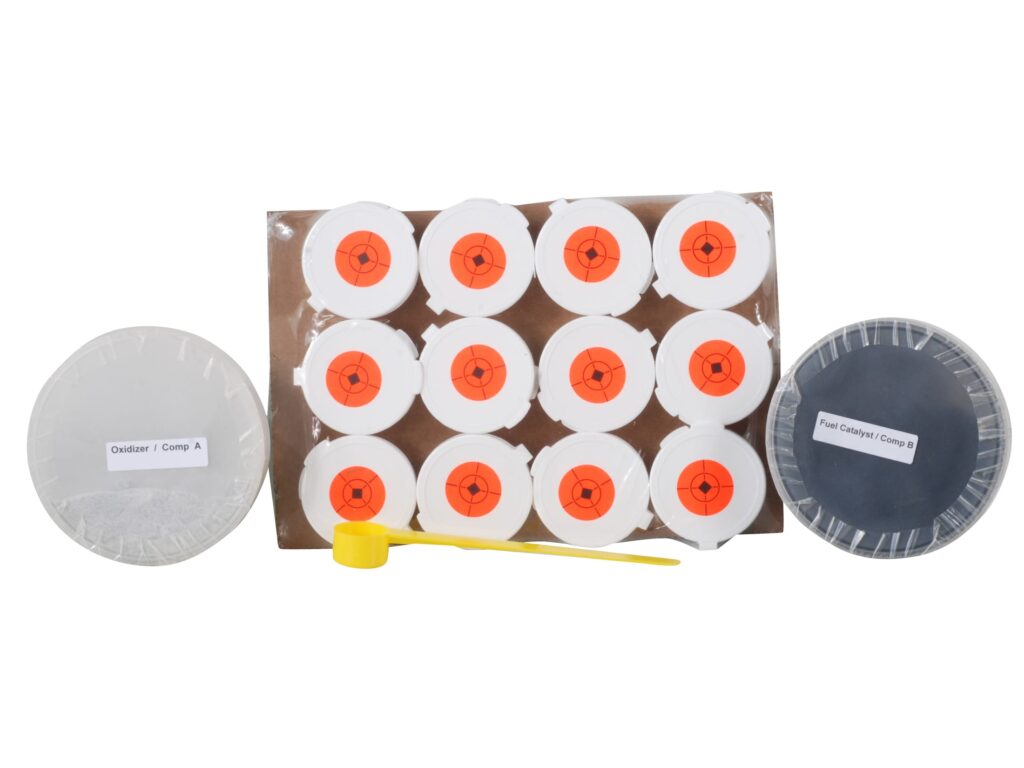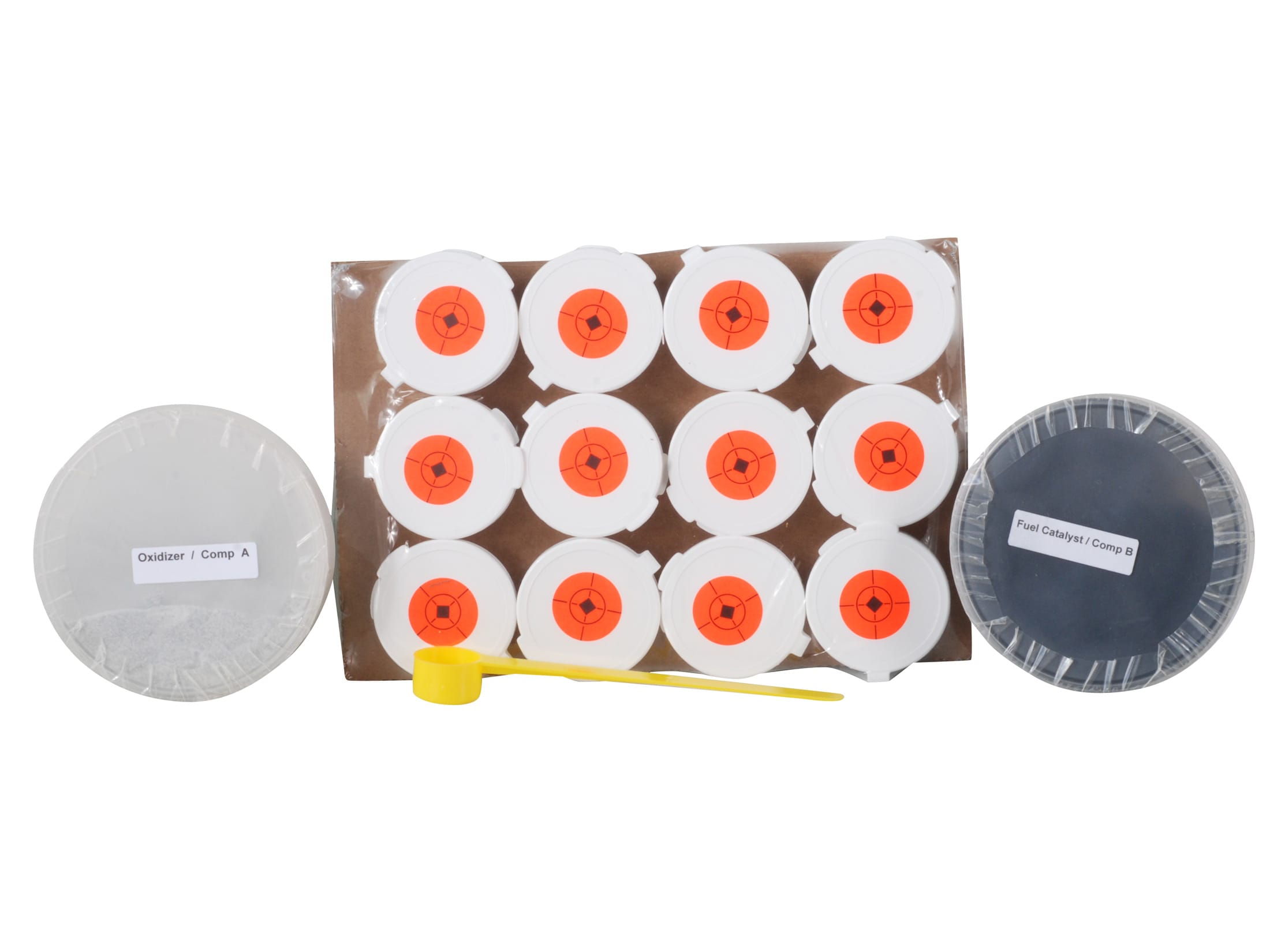
Tannerite and .22 Pellets: Exploring the Explosive Combination
The allure of explosions, especially in controlled environments, has fueled interest in products like Tannerite. This binary explosive, when mixed correctly, becomes a target that detonates upon impact. A common question that arises is whether a simple .22 pellet can initiate this reaction. This article delves into the science behind Tannerite, the capabilities of .22 pellets, and the feasibility of creating an explosion with this combination. We will explore the nuances of Tannerite’s sensitivity, the energy required for detonation, and the relevant safety considerations. The discussion will also cover the legal aspects and potential risks associated with using Tannerite, ensuring readers are well-informed and aware of the responsibilities involved.
Understanding Tannerite: The Basics
Tannerite is a commercially available binary explosive, meaning it consists of two separate components that are non-explosive on their own. Typically, these components are ammonium nitrate and aluminum powder. When combined and mixed thoroughly, they create an explosive compound that is designed to detonate upon high-velocity impact. The intended use is for target practice; shooters can clearly see and hear when they’ve hit the target due to the resulting explosion.
The key to Tannerite’s detonation is the rapid compression and heat generated by a high-speed projectile. This impact initiates a chemical reaction within the mixture, causing the ammonium nitrate to decompose rapidly, releasing a large amount of energy in the form of heat and pressure. This rapid expansion of gases is what produces the characteristic explosion.
The Power of a .22 Pellet
A .22 caliber pellet is a relatively small projectile, typically used in air rifles and some types of firearms. While it can be propelled at reasonably high velocities, the overall energy it carries is significantly less than that of larger caliber ammunition. The effectiveness of a .22 pellet depends on several factors, including the type of air rifle or firearm used, the weight and shape of the pellet, and the distance to the target.
When considering whether a .22 pellet can detonate Tannerite, it’s crucial to understand the energy threshold required to initiate the explosive reaction. Tannerite is designed to be relatively stable and requires a specific level of impact energy to trigger the detonation. This is a safety feature to prevent accidental explosions from minor impacts or static electricity.
Can a .22 Pellet Detonate Tannerite?
The short answer is: it’s highly unlikely under normal circumstances. Tannerite is designed to be relatively insensitive to low-energy impacts. While a .22 bullet from a firearm will almost certainly detonate Tannerite, a .22 pellet from an air rifle typically lacks the necessary velocity and mass to generate sufficient impact energy. The kinetic energy of a standard .22 pellet is often below the threshold required to initiate the explosive reaction in Tannerite.
However, there might be exceptional scenarios where a .22 pellet could potentially detonate Tannerite. For example, if the Tannerite is improperly mixed, contaminated with other substances, or exposed to extreme temperatures, its sensitivity might increase. Similarly, if the .22 pellet is fired from a very powerful air rifle at extremely close range, it might generate enough energy. However, these are not typical conditions and significantly increase the risk of accidental detonation.
Factors Influencing Detonation
Several factors play a crucial role in determining whether a projectile can detonate Tannerite:
- Velocity: The speed of the projectile is a primary factor. Higher velocity translates to more kinetic energy upon impact.
- Mass: The mass of the projectile also contributes to the kinetic energy. Heavier projectiles carry more energy at the same velocity.
- Impact Area: The size of the impact area can affect the concentration of energy. A smaller impact area concentrates the energy more effectively.
- Tannerite Composition: The mixing ratio and purity of the Tannerite components can influence its sensitivity. Improperly mixed or contaminated Tannerite may be more sensitive.
- Environmental Conditions: Temperature and humidity can also affect Tannerite’s sensitivity. Extreme temperatures can make it more volatile.
Safety Considerations When Using Tannerite
Using Tannerite involves inherent risks, and safety should always be the top priority. Here are some essential safety precautions:
- Follow Manufacturer’s Instructions: Always adhere to the instructions provided by the manufacturer for mixing, handling, and use.
- Use Appropriate Ammunition: Only use the type of ammunition recommended by the manufacturer. Using smaller ammunition like .22 pellets is not recommended and could be dangerous if the Tannerite is somehow more sensitive than expected.
- Maintain a Safe Distance: Ensure that all bystanders are at a safe distance from the target area. The manufacturer specifies the minimum safe distance, which should be strictly observed.
- Wear Protective Gear: Always wear eye and ear protection to prevent injuries from flying debris and the loud explosion.
- Avoid Contamination: Keep Tannerite components clean and free from contaminants. Contamination can alter its sensitivity and make it unpredictable.
- Store Properly: Store Tannerite components in a cool, dry place, away from heat sources and potential ignition sources.
- Be Aware of Legal Regulations: Understand and comply with all local, state, and federal regulations regarding the use and storage of explosives.
Legal Aspects of Tannerite Use
The legal status of Tannerite varies depending on the jurisdiction. In some areas, it is regulated as an explosive material, requiring permits and licenses for purchase and use. In other areas, it may be legal to purchase and use without any specific permits, as long as it is used for its intended purpose (target practice). It is crucial to research and understand the laws in your specific location before purchasing or using Tannerite. [See also: State Explosives Laws]
Misusing Tannerite or using it in a manner that causes damage or injury can result in severe legal consequences, including criminal charges and civil lawsuits. It is essential to use Tannerite responsibly and in accordance with all applicable laws and regulations.
Alternative Target Options
If you are looking for safer alternatives to explosive targets, there are several options available. These include:
- Steel Targets: Steel targets provide immediate feedback with a loud ring when hit. They are durable and can be used repeatedly.
- Paper Targets: Paper targets are inexpensive and can be used to practice accuracy. They are available in various shapes and sizes.
- Clay Targets: Clay targets are commonly used in shotgun shooting and provide a challenging and dynamic target.
- Reactive Targets (Non-Explosive): Some reactive targets provide visual or auditory feedback without the use of explosives. These can be a safer alternative for target practice.
Conclusion: Tannerite and .22 Pellets – A Responsible Approach
While the idea of detonating Tannerite with a .22 pellet might seem intriguing, it is generally not feasible under normal conditions due to the low energy of the pellet. More importantly, attempting to do so can be dangerous and increase the risk of accidental explosions. Always prioritize safety when handling Tannerite and adhere to the manufacturer’s instructions and all applicable laws and regulations.
Understanding the science behind Tannerite, the capabilities of different projectiles, and the associated risks is crucial for responsible use. If you are unsure about any aspect of using Tannerite, consult with experienced shooters or contact the manufacturer for guidance. Remember, responsible gun ownership and safe shooting practices are paramount. Using regulated explosives requires knowledge and caution.
The combination of Tannerite and .22 pellets is not a typical or recommended method for creating an explosion. The primary purpose of Tannerite is for target practice with high-velocity rounds, not lower-powered projectiles like .22 pellets. Attempting to use Tannerite with .22 pellets could lead to unpredictable results and potentially dangerous situations. Always prioritize safety and follow the manufacturer’s guidelines when handling Tannerite. The effectiveness of Tannerite relies on the impact energy from a sufficiently powerful projectile. Using .22 pellets may not provide the necessary energy to reliably detonate the Tannerite. Furthermore, modifying or experimenting with Tannerite can have serious legal consequences. It’s important to understand the risks associated with explosives and to handle them responsibly. Using the appropriate ammunition is critical for safely detonating Tannerite. The intended use of Tannerite is with firearms that deliver a high-impact force. Experimenting with .22 pellets deviates from the recommended use and increases the potential for accidents. When in doubt, consult with experts or refer to the manufacturer’s instructions for safe handling and usage of Tannerite. Remember, safety should always be the top priority when dealing with explosive materials like Tannerite.

